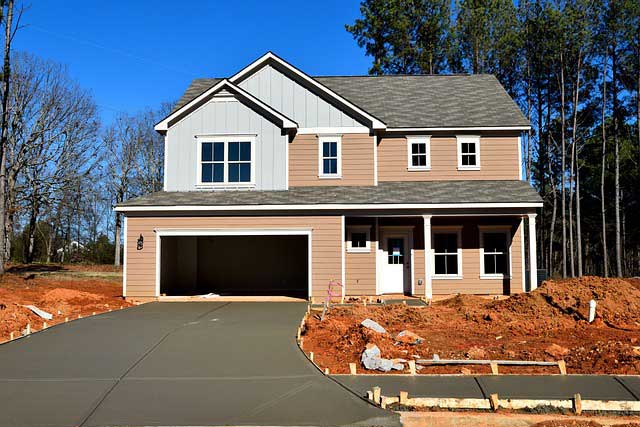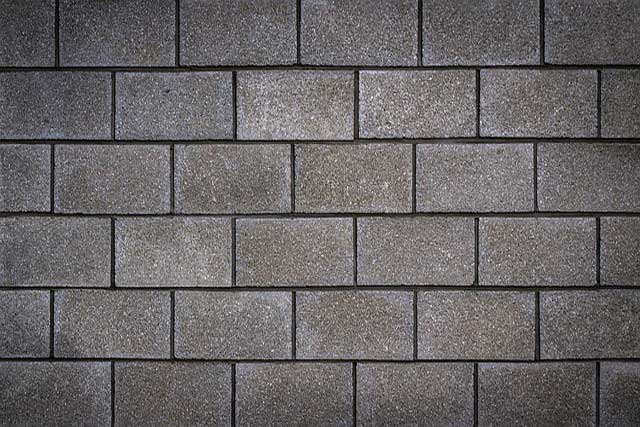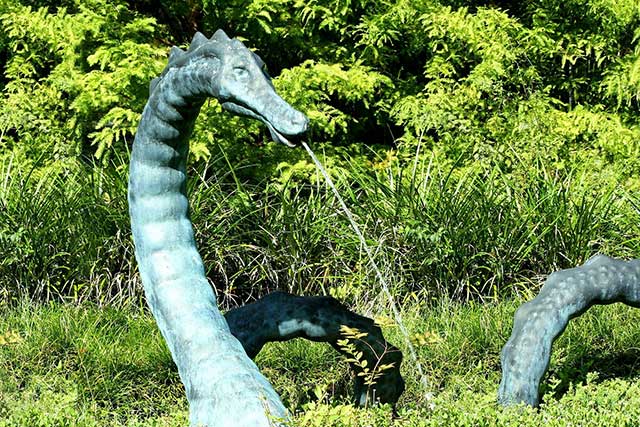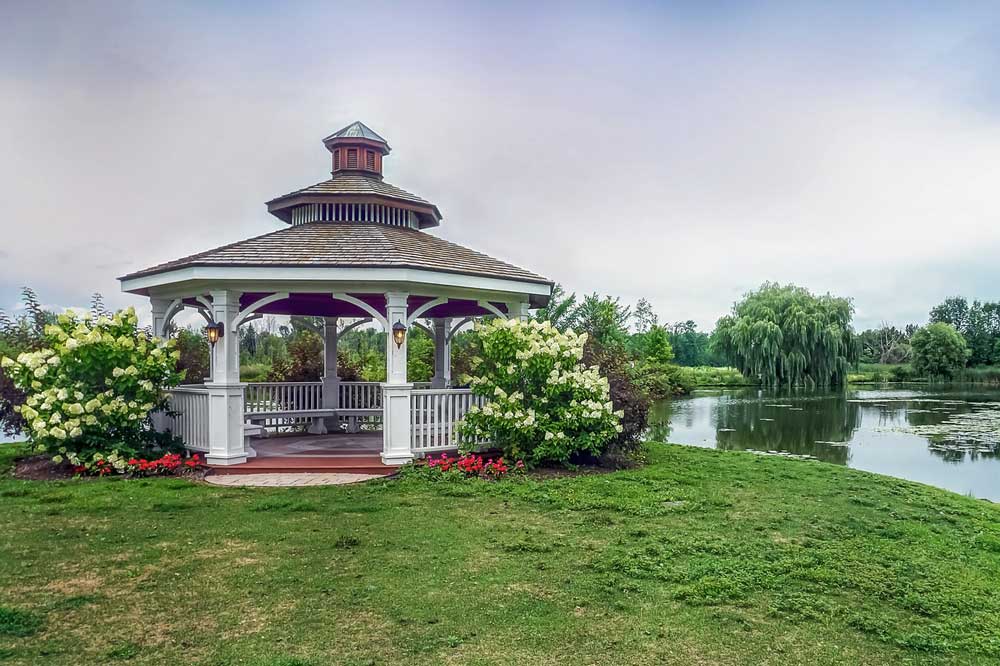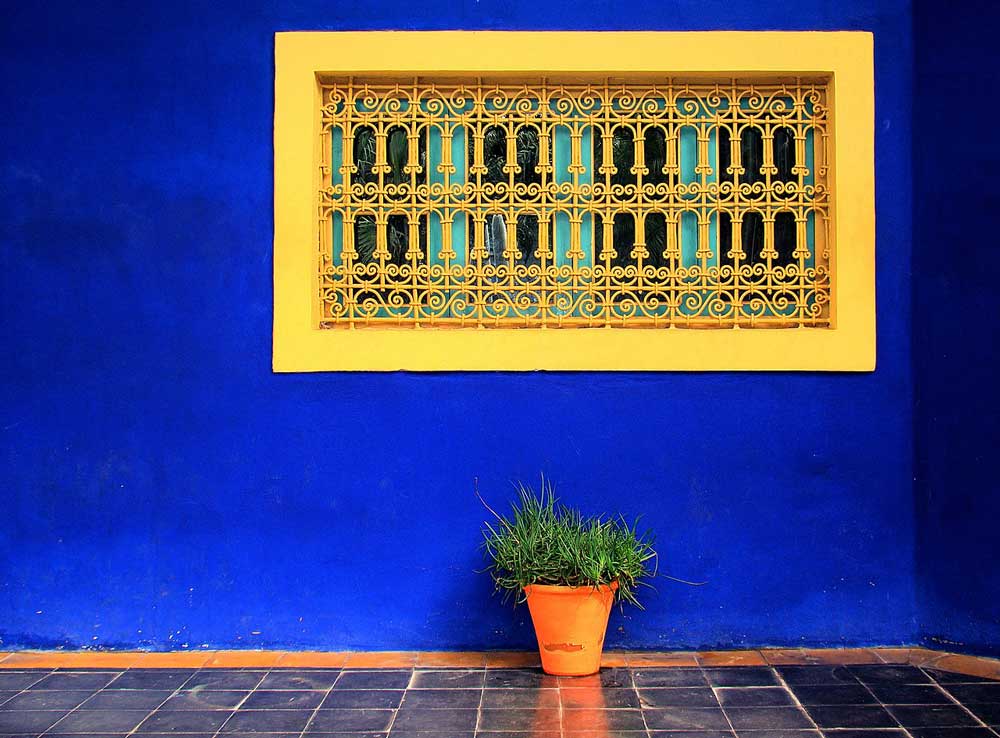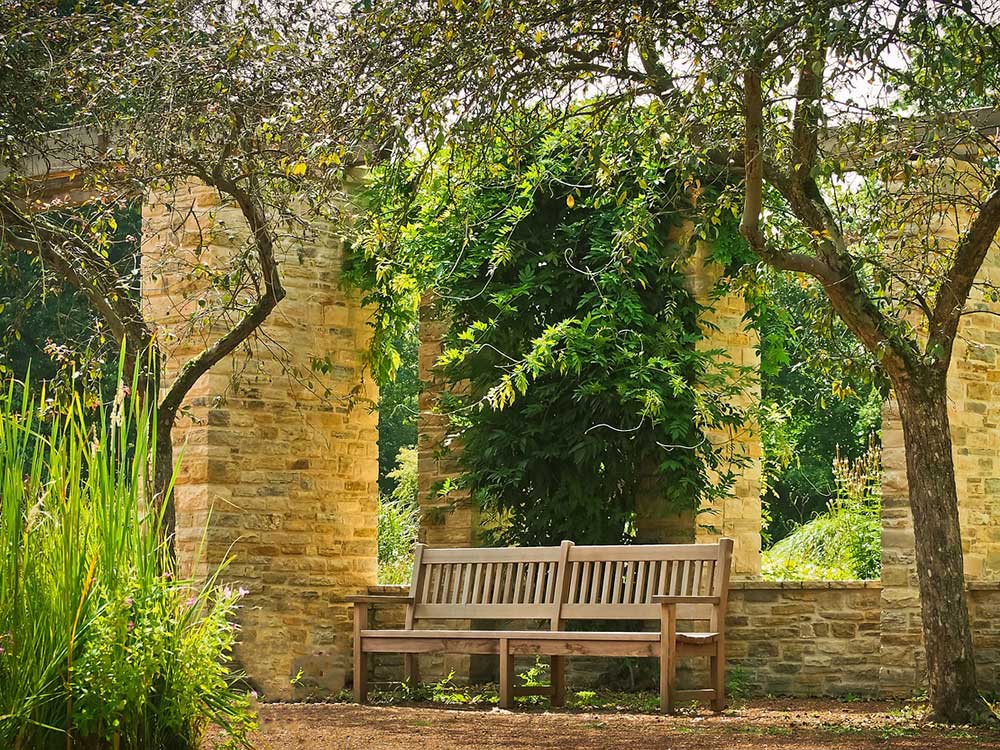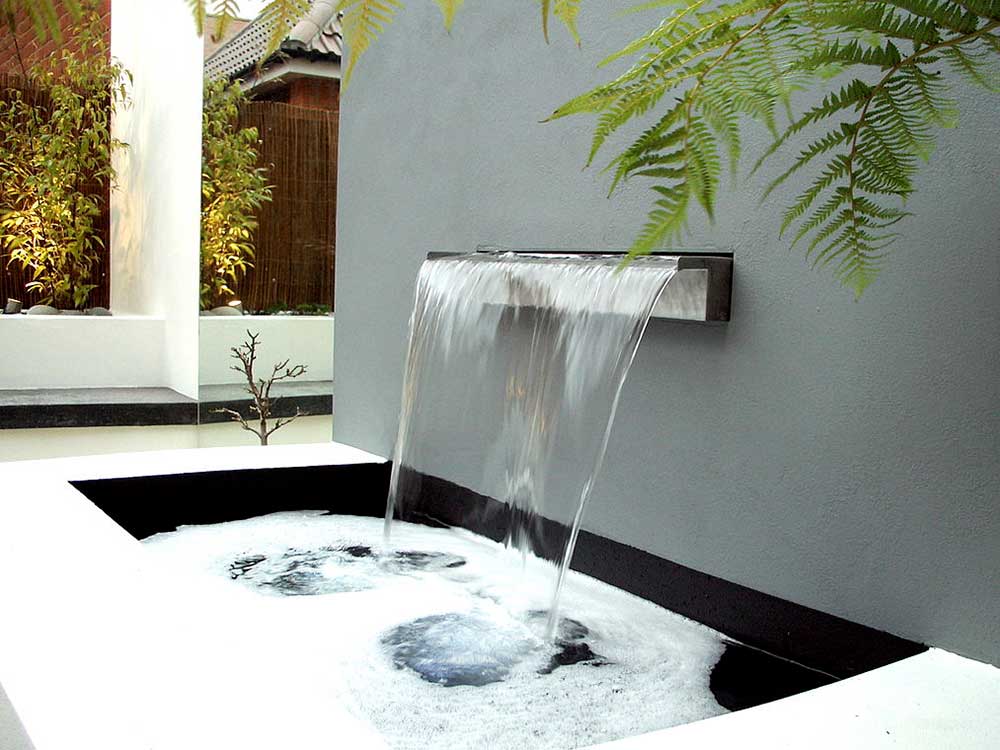Part 3: Hard landscaping
| Site: | OpenLearn Create |
| Course: | Garden and planting design |
| Book: | Part 3: Hard landscaping |
| Printed by: | Guest user |
| Date: | Tuesday, 25 November 2025, 3:42 PM |
1. Introduction
Introduction to section (YouTube, 3:16)
2. Garden structures
A garden structure is anything that has been built from hard landscaping materials (as opposed to soil or planting) in a landscape.
A structure can be functional, which means it has a practical use, or it can be aesthetic, which means that it is artistic or has visual appeal. In practice most structures are designed for both their function and aesthetics so that they are useful but also look nice.
These structures might be considered more functional than aesthetic:
These structures might be considered more aesthetic than functional:
A garden is a collection of functional and aesthetic elements combined. Some very functional items can be designed to be more aesthetically pleasing.
3. Types of surfaces
When you design a garden you must choose a surface for every area of the garden, it could be lawn, water, planting or a hard landscaping surface for paths or seating areas. Hard landscaped, or ‘built surfaces’ include un-bonded surfaces, sealed surfaces and unit surfaces.
Resin bonded surfaces are an alternative which offer a softer surface with many colour options as any colour of material can be fixed into the resin.
Unit surface examples:
Do an internet image search (for example Google Images or on Pinterest) for the following styles of garden:
- Cottage garden
- Modern garden
- Japanese garden
- Water garden
- Wildlife garden
Note down which hard landscaping materials are being used in each style.
You will see that some materials have a particular style and are used repeatedly in this style of garden, for example, gravel and natural stone are very common in Japanese gardens.
4. Scale and dimension
It is important when designing hard landscape features to consider the scale of them. A thick, high wall in a small garden might look domineering, a tiny patio in the corner of a massive garden might look a bit pathetic.
The scale of a feature must be practical so that it functions well, and it also must be aesthetically pleasing, so that it looks nice in the landscape.
When drawing features into your design get used to measuring objects so that you can be accurate in your designs, for example:
- How big is a wheelie bin and so what size would a bin store need to be?
- How high is the seat of a chair?
- How long is a bench that can seat three people?
- How wide is a path that two people can walk along side by side?
- How wide is a garden gate?
- How thick is a drystone wall?
It is useful to have many of these measurements to hand when designing.
It can also be fun to break the rules of scale occasionally, putting unusually big or small features into a landscape to create a sense of fun.
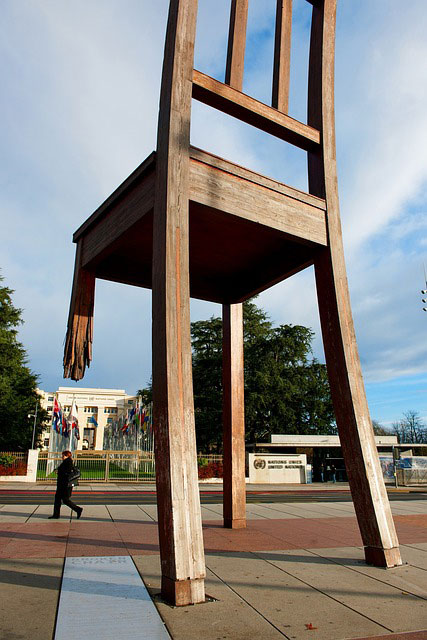



Do an internet image search for terms like the following, to see how landscaping can be used at different scales:
- Miniature garden
- Large garden statue
5. Siting considerations
Consider where you place each element of the garden based on the following:
The aspect is which direction the feature faces or its position in relation to, for example, a house. Examples (in the northern hemisphere):
- A patio on the south side of the house will be sunnier than a patio on the north side of the house.
- A garden bench facing east will face the morning sun, a garden bench facing west will face the evening sun.
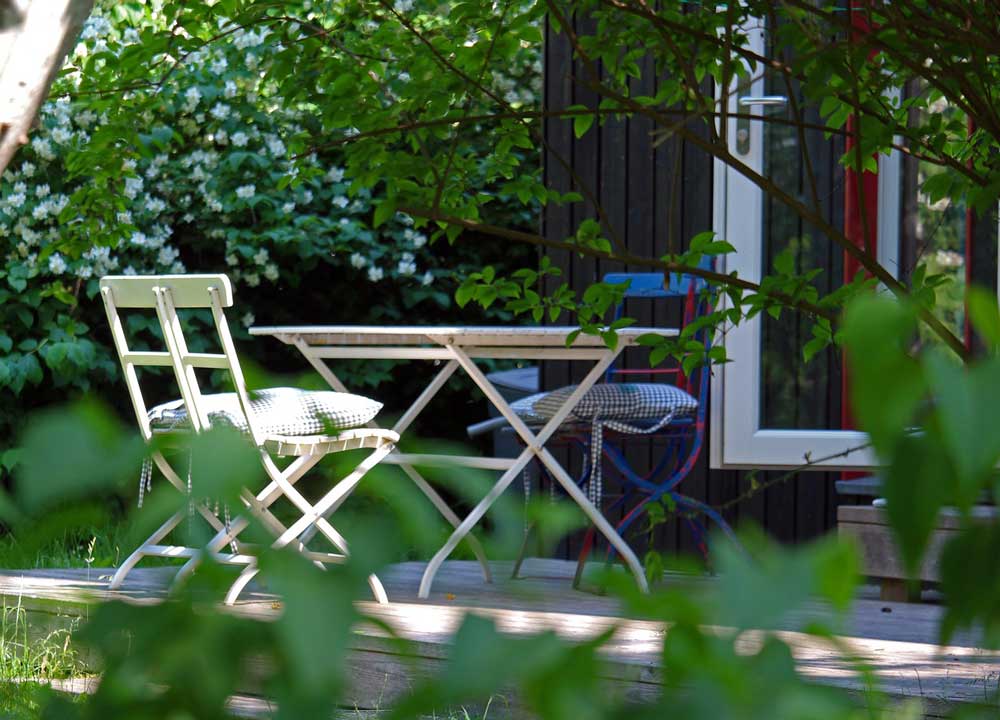
It is usually cheaper and easier to build hard landscaping structures on level ground than on slopes. If designing for a slope, then the engineering of the structure must ensure that it doesn’t fall or slide down the hill. Often, if building on a slope, level areas for foundations must be dug into the slope which means a large amount of earth movement, which can be expensive, and retaining walls may need to be built on the downhill side.
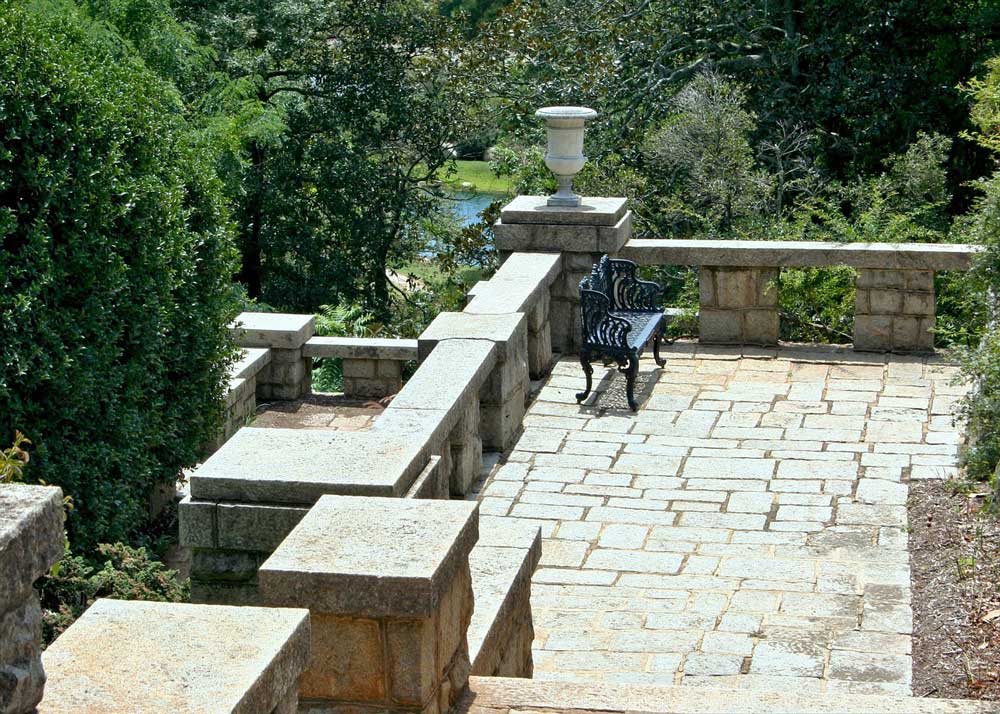
If features are too close together then they can interfere with each other. The pond and plant pot in this picture block the end of the path making it too narrow. Conversely, if features are widely spread around a garden they can look as if they are disjoined or scattered and not part of a single cohesive design.
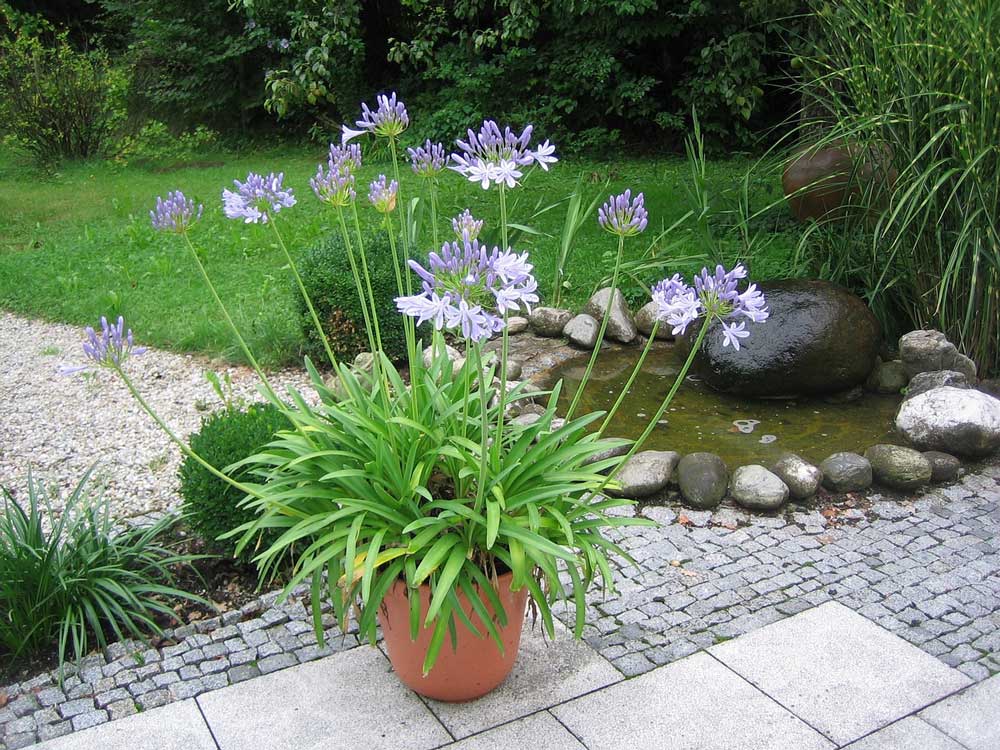
6. Colour and texture
The colour of a feature alters the style enormously and should be considered carefully. For more traditional gardens, designers often use natural coloured materials like stone and wood and match the colour to the surrounding landscape.

Whereas for a more contemporary garden, designers may choose colours that do not look so natural in the landscape.
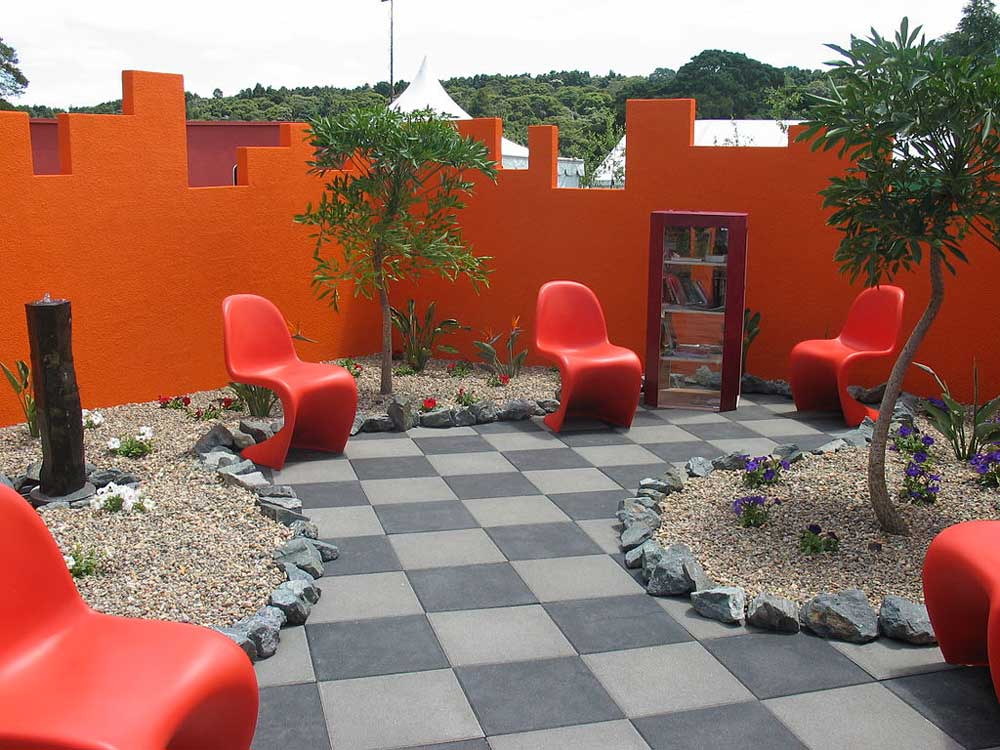
Wikimedia / public domain
The texture of a hard landscape structure also has a big impact on the style. Generally, more traditional gardens will contain features made from naturally textured materials like riven stone or gravel:
Whereas contemporary gardens might be more likely to contain polished or smooth surfaces:
7. Ergonomics
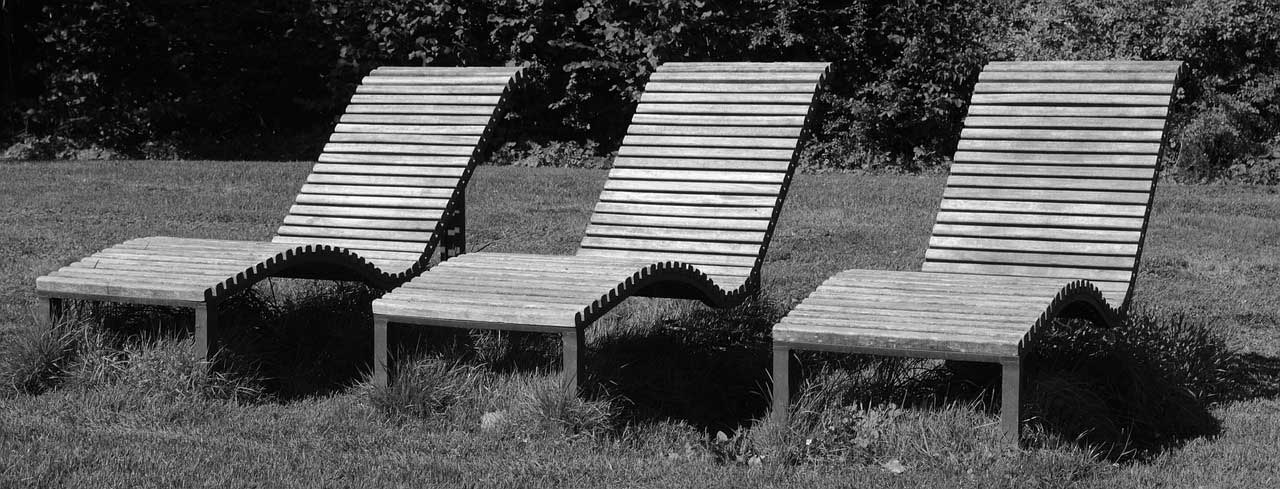
Ergonomics is the principle of designing to fit the people who will use the feature.
We hear a lot about ergonomics of the workplace, which usually means the setup of a workspace and computer to ensure the comfort of people sitting at a desk all day, but in fact ergonomics are also important in the design of structures in a landscape.
- Are the steps a comfortable height?
- Is the handrail at the right height?
- Is the seat at the right height with the correct angle of back rest?
- Is the slope a comfortable gradient?
Do an internet images search for ‘ergonomic garden design’. Take note of all the different types of features that can be made ergonomic from planting beds raised to wheelchair user’s ideal height, to form fitting furniture, to smooth walking surfaces without trip hazards.
8. User groups
When considering the design of a structure you must consider who will be using it. Will it be used mostly by children, adults or the elderly? Does it need to be accessible to people with physical disabilities? The ergonomics will be different for different sizes and shapes of people, and their mobility.
It is important that your feature is ergonomic for the majority of its users.
9. Longevity

Nigel Mykura via Wikimedia / CC BY-SA 2.0
When choosing materials and construction techniques for a structure, consider how long you need the structure to last and how intensively it is going to be used.
Is the structure:
- going to be used constantly, for example steps in a public park?
- exposed to extreme weather, for example a bench in a coastal garden?
- going to come under heavy pressure, for example a driveway?
Different materials have different strengths, some will wear away or rot over time like wood, others are more likely to break or smash, like glass or thin concrete or stone slabs.
The following qualities of a material affect its performance:
- Mass and density – how heavy is it? How solid is it?
- Durability – how long will it last before wearing down or rotting away?
- Tensile and compressive strength – will it bend or crush?
10. Costing

As you are deigning you should be working roughly to your client’s budget, this means estimating costs as you go along so that you don’t end up wasting time designing something they can’t afford.
Once your design is complete you need to cost all the elements of the design including:
- materials
- labour
- insurance
- consumables
- vehicles
- machinery/equipment hire.
As you price more jobs, you will discover that you start to know many of the costs well enough to easily estimate your design as you go along and you will develop spreadsheets with many of your commonly costed items, which makes it quicker every time you do a costing. You will also start to develop relationships with suppliers and know where to find the best quality or best priced items.
Some designers present their clients with an ‘on budget’ design and an ‘over budget’ design and often clients are tempted to spend a bit more once they see what they could have with a bigger budget.
Look at some websites of landscape materials suppliers. Find some products such as paving, walling stone, decking or fencing that you like and have a look at how much different types cost. You may want to think about sustainability, is the stone paving imported from the other side of the world? Is the timber from sustainable forests?

